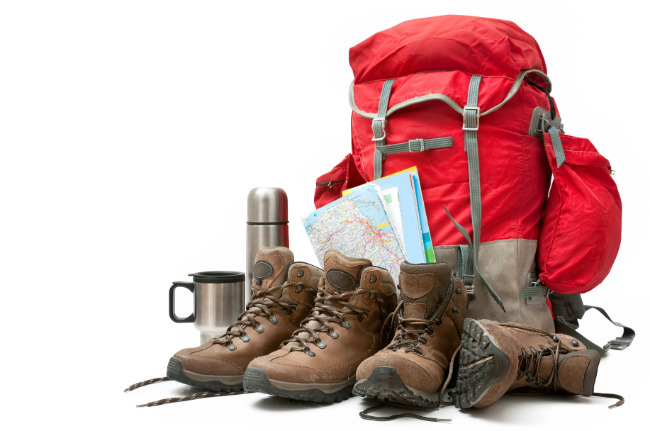How-To: Pack Smart For Your First Thru-Hike
Packing for your first long thru hike is a complicated game of Tetris, indeed. Months of necessities need to fit together in a limited space, and somehow the whole mess has to be light enough to schlep up the side of a mountain. Obviously, a rolling suitcase is out of the question, so how do you decide what's worth dragging along?
We asked Rusty Gardner of Park City, UT, how to avoid making rookie mistakes like overpacking and turtling out under the weight of too much Patagonia swag. Gardner would humbly deny he's an expert thru-hiker, but after trekking more than 10,000 miles—including complete Appalachian Trail hikes in 2003, 2005 and 2007 and a Pacific Crest Trail hike in 2006—he has more than a little experience with the subject. Here's his advice for packing it all in:
Start with a standard pack list.
Gardner recommends this one from Backpacker.com,which was developed by Winton Porter of Mountain Crossings, an outdoors store about 30 miles into the Appalachian Trail from Springer Mountain, GA. Porter knows what he's talking about after helping thousands of hikers send home their excess.
Get the gear before the pack.
Most people buy their pack immediately after deciding to do the hike. But that's backward, Gardner says. Buy your gear first and then figure out how big your pack needs to be. "There's an old adage that says whatever size pack you have, you'll fill it up," he says. "If you buy a 75- or 85-liter pack, you'll fill it to the brim and end up with 50 pounds! Sixty liters is a good size pack to shoot for."
Choose a comfortable pack.
If your pack doesn't fit you, you're going to be miserable for eight to 12 hours a day.
Drop it all on down.
"Out of your entire gear list, you should spend the most money on a high-quality down sleeping bag," Gardner says. It gets obscenely cold in the mountains, so don't try to save money on the one thing that will keep you warm. Gardner's advice: "Go with a bag rating that's 10 to 15 degrees below the coldest temperature you're expecting. Also, women sleep much colder than men—keep that in mind when deciding on a bag rating. Don't buy synthetic—down is warmer, lighter and more compressible."
Lose weight on the "big three."
Pack, sleeping bag and tent—this is the holy trinity that makes up 60-70% of your base weight, or everything that you're carrying that's not food, water and fuel. Research what you're buying, and you can reduce your weight greatly on these three items. Personally, Gardner plans to go from a 3.5-pound, one-person tent to a 1.5-pound tent from Six Moons Designs (the Skyscape). He recommends a tent made from silnylon—a newer, lightweight material—and shopping at tarptent.com for light, quality stuff.
Follow the KISS principle (or Keep It Simple, Stupid).
Gardner says his biggest surprise on his first trip was just how little he could get away with carrying and still be safe and comfortable. "It's very difficult to know what works for you until you're out there trying it, though," he says. "Gear lists, journals and talking to other hikers can get you in the zone, but nothing is better than a long trip to figure out what works for you." Plan to send things home or acquire stuff along the way until you've worked out your system.
Always have dry clothes.
When you get into camp at the end of a cold, wet day, hypothermia is a very real threat. Have one set of clothes that you don't wear for hiking, so you'll always have dry threads to sleep in.
But don't overdo it on the clothes (or anything else).
Gardner says he sent 10 pounds of clothes home on his first long thru hike, and he's seen other hikers send home big cotton bath towels, four-person tents, huge axes and all kinds of steel cookwear. If you wouldn't wish it on your worst enemy's back, don't try to carry it on yours.
Ditch the Gore-Tex boots.
They're hot, heavy, and they don't breathe. "If it's raining hard, nothing is going to keep your feet dry," Gardner says (check out The Myth of the Waterproof Shoe). "I often see hikers start in Gore-Tex boots but very few are still wearing them more than a couple of hundred miles in." The good news: even if your feet get soaked, you can still keep them crack-free and comfortable.
Indulge with an epic fantasy series.
If you want to make fast friends, that is. The most frivolous thing Gardner is willing to lug through the Smoky Mountains? An 800-page book. "In 2005, there were a bunch of us chasing Harry Potter novels up the Appalachian Trail," he says. "When you finished one, you passed it to the next person. It was funny how people were sticking right next to the person who had the next novel in the series."
